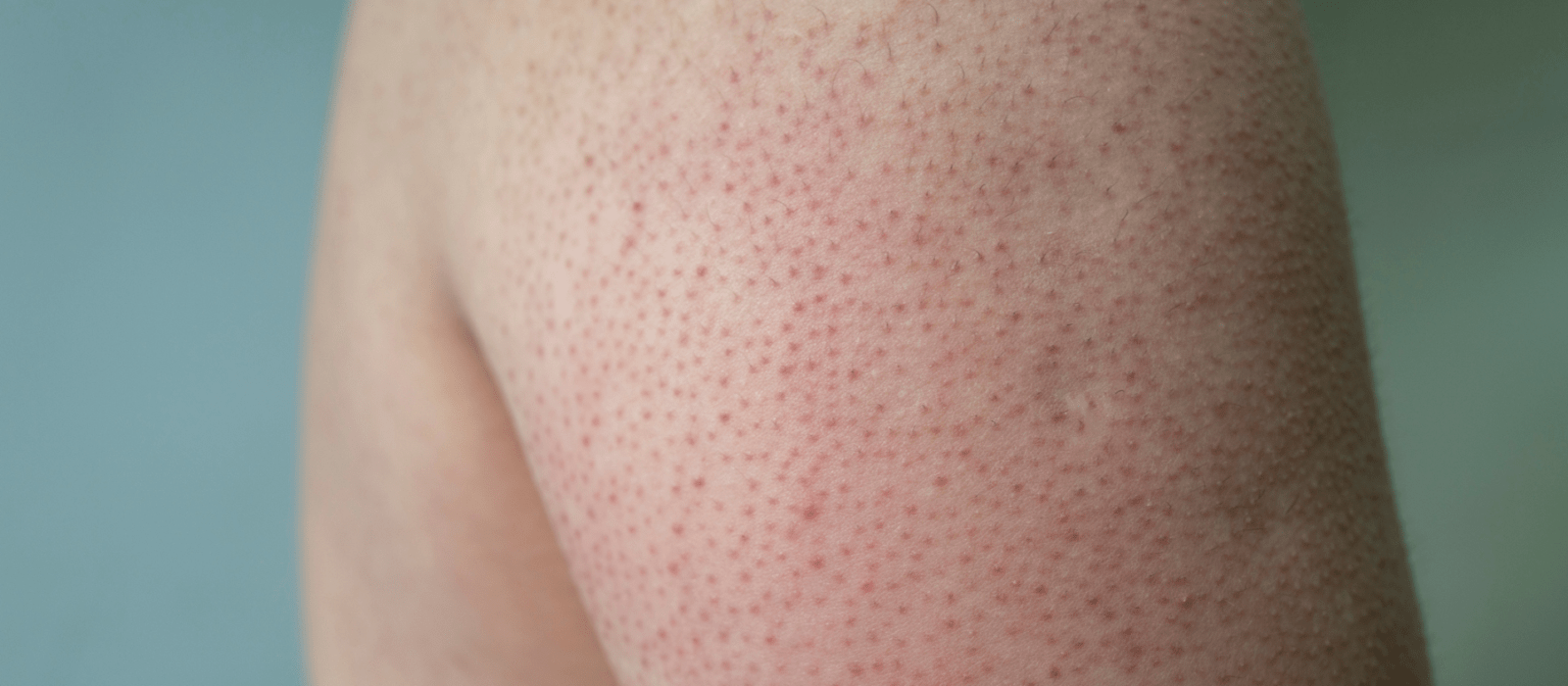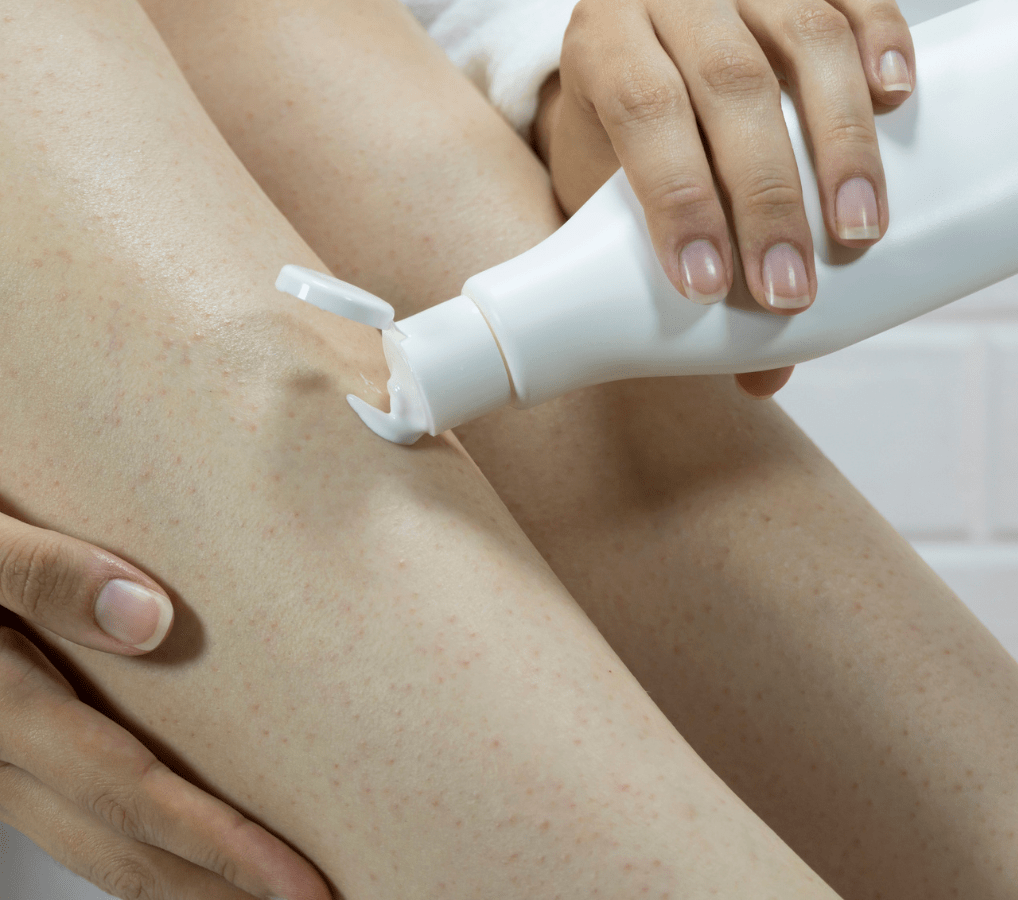About Keratosis Pilaris
Keratosis Pilaris is an inherited skin condition that develops in almost half of the population, but is more common in people with dry skin and eczema. Dry skin can occur at any age and for many reasons. Skin generally becomes drier as we age, during the winter, and in low-humidity climates such as the desert. Sometimes a dermatologist’s help is necessary to get relief from dry skin and keratosis pilaris.
SYMPTOMS
Dry skin can have the following symptoms:
• Rough, scaly, or flaking skin.
• Itching.
• Gray, ashy appearance in people with dark skin.
• Cracks in the skin, which may bleed if severe.
• Chapped or cracked lips
Keratosis pilaris, sometimes called “chicken skin,”, are tiny, flesh colored or slightly red bumps that give the skin a texture like sandpaper. Keratosis pilaris is an inherited condition in which dead skin cells are not shed appropriately, causing them to pile and cling to hair follicles creating the tiny bumps. Because their dry skin sheds more, some people only have keratosis pilaris flare-ups when their skin becomes very dry.
Most common in children and teens, the bumps appear on the upper arms and thighs. In children, they also are common on the cheeks and can be mistaken for acne.
Keratosis pilaris sometimes itches, mainly during the winter and in low-humidity climates. When humidity increases, usually during the summer, and when the skin is moisturized appropriately, the
skin becomes less itchy and the bumps become less red and less obvious.
TIPS TO CARE FOR DRY SKIN
• Use warm water
Hot water removes your natural skin oils more quickly. Warm water is best for bathing. Quick showers (less than 10 minutes) are suggested.
• Be good to your face
If you have very dry skin, cleanse your face just once a day, at night. In the morning, rinse your face with cool water.
• Use a mild soap
Look for a mild, fragrance-free soap or cleanser that moisturizes. Deodorant bars, strong fragrances in soaps, and products containing alcohol can strip natural oils from the skin. This dries the skin. Exfoliating soaps that feel like sand can cause damage to the skin.
• Shave after bathing
It is best to shave after bathing when hairs are soft. To lessen the irritating effects of shaving (face or legs) on dry skin, make sure you use a shaving cream or gel. When possible, allow the product to remain on the skin about 3 minutes before starting to shave. Then shave in the direction that the hair grows. Change razor blades or throw away disposable razors after 5 to 7 shaves to help minimize irritation.
• Moisturize right after washing
A 5- to 10-minute bath or shower adds moisture to the skin. Spending more time in the water often leaves your skin less hydrated than before you started. To retain moisture from a bath or shower, apply an ointment or cream while the skin is still moist, within 3 minutes of drying off.
• Look at the ingredients in your moisturizer
For very dry skin, a moisturizer that contains urea or lactic acid may be helpful. These ingredients help the skin hold water. There are moisturizers with these ingredients available both over-the-counter and by prescription. While these ingredients can sting if you have eczema or cracked skin, they do benefit the skin.
• Use a humidifier
Keep the air in your home moist with a humidifier.
• Soothe chapped lips
At bedtime, apply a lip balm that contains petrolatum. Other names for this ingredient are petroleum jelly and mineral oil.
• Keep skin protected when outdoors in winter
In the cold, wear a scarf and gloves to help prevent chapped lips and hands. Keeping your skin well moisturized should improve dry skin. If the dryness worsens, contac your dermatologist.
FAQ
Can dry skin become infected?
When dry skin cracks, germs can enter the skin and cause an infection. Restoring lost moisture can make the skin softer, smoother, less itchy and less likely to crack.
What ingredients should I look for in a moisturizer?
Look for a moisturizer that contains urea or lactic acid, which help the skin hold water. There are moisturizers with these ingredients available both over-the-counter and by prescription.
Where on the body does keratosis pilaris occur?
Keratosis pilaris bumps often appear on the upper arms and thighs. In children, they also are common on the cheeks and can be mistaken for acne.
Visit Virginia Dermatology & Skin Cancer Center
Our team provides thoughtful, expert care for all your general, surgical and cosmetic dermatological needs. We are proud to offer the most advanced dermatological services in Norfolk, Suffolk, Newport News, and surrounding areas.


